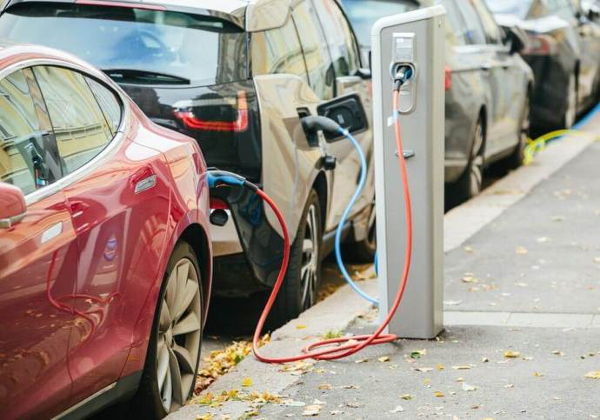NITI Aayog and Rocky Mountain Institute (RMI) India released a new report ‘Mobilising Electric Vehicle Financing in India’, which highlights the role of finance in the India’s transition to electric vehicles (EVs) and analyses that the transition will require a cumulative capital investment of US$ 266 billion (Rs. 19.7 lakh crore) in EVs, charging infrastructure, and batteries over the next decade.
The report also identifies a market size of US$ 50 billion (Rs. 3.7 lakh crore) for the financing of EVs in 2030—about 80% of the current size of India’s retail vehicle finance industry, worth US$ 60 billion (Rs. 4.5 lakh crore) today.
“The need of the hour is to mobilise capital and finance towards EV assets and infrastructure,” said Amitabh Kant, CEO, NITI Aayog. “As we work towards accelerating the domestic adoption of EVs and push for globally competitive manufacturing of EVs and components like advance cell chemistry batteries, we need banks and other financiers to lower the cost and increase the flow of capital for electric vehicles.”
India’s EV ecosystem has thus far focused on overcoming adoption hurdles associated with technology cost, infrastructure availability, and consumer behaviour. Financing is the next critical barrier that needs to be addressed to accelerate India’s electric mobility transition.
End-users currently face several challenges, such as high interest rates, high insurance rates, and low loan-to-value ratios.
To address these challenges, NITI Aayog and RMI have identified a toolkit of 10 solutions that financial institutions such as banks and non-banking financial companies (NBFCs), as well as the industry and government can adopt in catalysing the required capital.
“Re-engineering vehicle finance and mobilising public and private capital will be critical to accelerating the deployment of the 50 million EVs that could be plying on India’s roads by 2030,” said Clay Stranger, Senior Principal, Rocky Mountain Institute. “These solutions represent high-leverage areas for interventions in finance, and we believe that many are relevant beyond India.”
The 10 solutions recommended in the report include financial instruments such as priority-sector lending and interest-rate subvention. Others are related to creating better partnerships between OEMs and financial institutions by providing product guarantees and warranties. Furthermore, a developed and formal secondary market can improve the resale value of EVs and improve their bankability. “The identified barriers within EV finance need to be tackled in structured manner with innovative financing models,” said Mr. Randheer Singh, Senior Specialist at NITI Aayog.
Recommendations beyond finance include digital lending, business model innovation, fleet and aggregator electrification targets, and the creation of an open data repository for EVs.
The report further determines that investment in India’s transition to electric mobility has the potential to create significant economic, social, and environmental benefits for the country. As the economics of EVs continue to improve, new business models and financing instruments gain acceptance, and government programmes drive early adoption and promote domestic manufacturing, India’s EV market is poised for growth in the coming decade.
The report can be accessed here: http://niti.gov.in/sites/default/files/2021-01/RMI-EVreport-VF_28_1_21.pdf
You may also like
-
Navigating India’s Skill Landscape
-
Trade Connect E-platform For Exports Is Single Window, Fast, Accessible And Transformational: Shri Piyush Goyal
-
India-us Working Together In Areas Like Critical Minerals, Supply Chains And Advanced Technologies: Shri Piyush Goyal
-
Cabinet Approves Health Coverage to All Senior Citizens of the Age 70 Years and Above Irrespective of Income
-
Cabinet Approves PM Electric Drive Revolution in Innovative Vehicle Enhancement (PM E-DRIVE) Scheme With An Outlay of ₹.10,900 Crore
